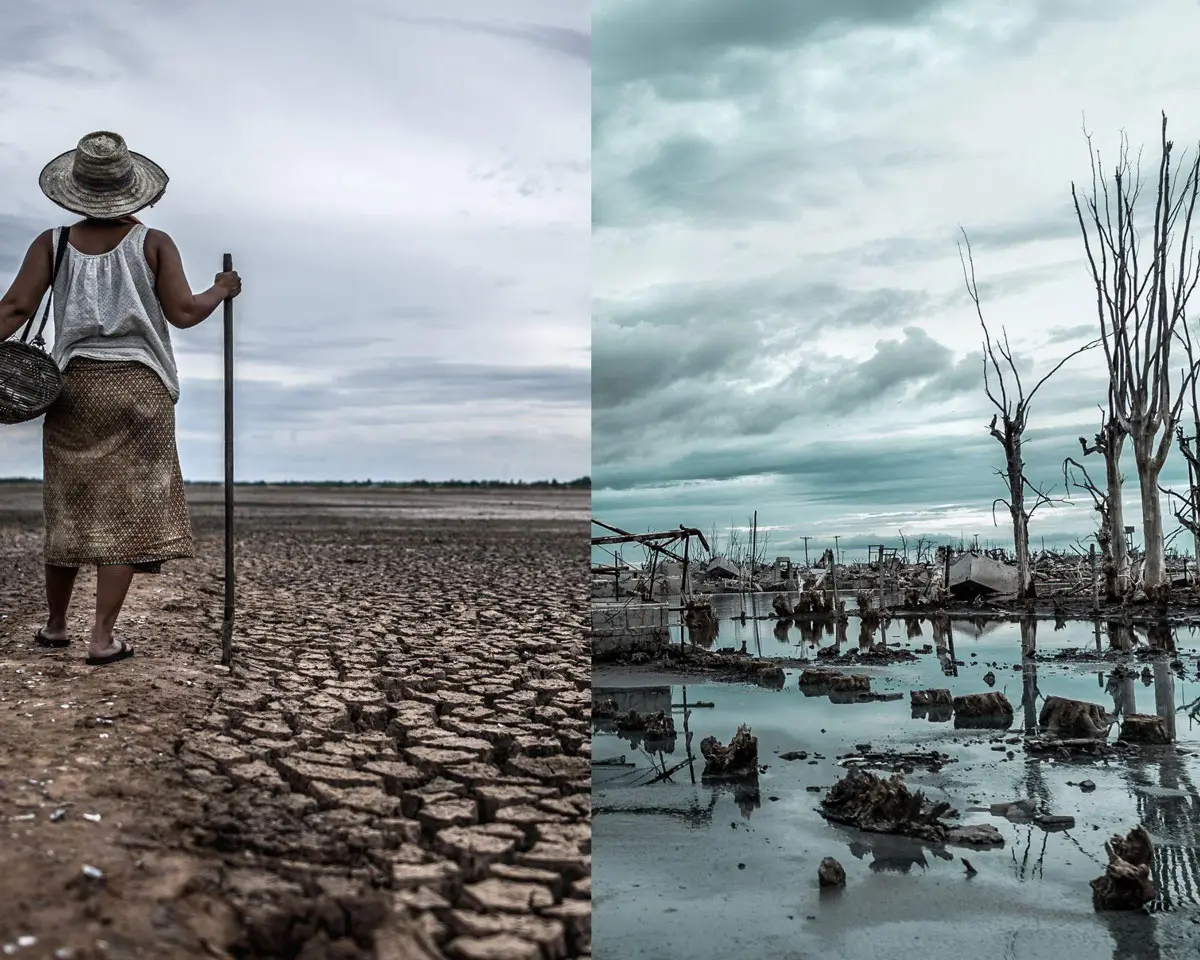



Every summer, India seems to break another heat record. In one region, floods submerge villages, while in another, droughts dry up entire fields. These are not just weather changes; they are life changes. Along with the visible destruction, a quieter challenge is growing: climate anxiety.
Climate anxiety is the persistent worry, fear, or helplessness about the future of our planet. It is the emotional toll of living with constant reminders that our environment is in crisis. While concern for the planet is natural, the intensity and frequency of today’s disasters make this concern overwhelming, especially for vulnerable populations.
India stands at the frontline of the climate crisis. According to UNICEF, more than 600 million Indian children are at high risk from climate-related events; heatwaves,
cyclones, floods, and droughts. For rural communities and farmers, each unseasonal rainfall or prolonged heatwave is not just an inconvenience but a direct threat to survival. Crop failures lead to rising debts, financial instability, and a cycle of distress that impacts both physical and mental health.
In urban spaces, the challenge takes another form. Young people are exposed to an endless stream of “climate doom” through social media. Striking visuals of burning forests, floods, or record-breaking temperatures can create a sense of helplessness about the future. A Lancet study found that 59% of Indian youth feel very or extremely worried about climate change, and nearly half admit that these worries interfere with their daily life. This shows how deeply climate change is shaping mental well-being across generations.
The psychological impact of climate anxiety cannot be dismissed. For many, it manifests as racing thoughts, sleepless nights, or a constant sense of dread. Survivors of floods, cyclones, and other disasters often experience trauma similar to post-traumatic stress disorder (PTSD). Research from NIMHANS highlights that mental health cases, particularly anxiety and depression, rise significantly in regions affected by climate-related disasters.
Children and adolescents are especially vulnerable. Growing up with uncertainty about their future, whether it is about education, career, or even survival, creates emotional strain. Farmers, too, report feeling trapped between financial pressure and unpredictable weather, often carrying the burden diligently due to stigma around mental health in rural India.
Despite these challenges, India is also showing remarkable resilience. Communities are coming together in ways that provide both environmental solutions and psychological strength. Student-led tree plantation drives, local cleanup campaigns, and grassroots climate initiatives are more than symbolic; they empower individuals, reduce feelings of helplessness, and foster hope.
Schools and universities are beginning to acknowledge eco-anxiety in conversations with students, helping normalize the experience and encouraging healthy coping mechanisms. For many young people, activism itself becomes therapy, channeling worry into meaningful action.
India’s cultural traditions further provide powerful tools for coping. Practices like yoga and meditation not only calm the mind but also cultivate resilience. Philosophies such as Vasudhaiva Kutumbakam (“the world is one family”) remind us of our shared responsibility toward the earth and toward one another. These approaches combine modern psychology with deep-rooted Indian wisdom, offering holistic ways to manage climate anxiety.
Climate anxiety is real, and it is growing. But it does not have to paralyze us. By acknowledging its impact, creating safe spacing for conversations, and integrating both modern interventions and traditional practices, India can respond to this challenge with strength and compassion.
Most importantly, we can turn fear into action. Small steps; whether reducing waste, planting trees, participating in local initiatives, or simply supporting those affected by disasters, make a difference. They remind us that we are not powerless in the face of the climate crisis.
When we care for the Earth, we also care for ourselves. And in that shared responsibility lies the hope that future generations will inherit not only a safer planet but also stronger minds.
UNICEF. (2021, August 20). Children in four South Asian countries at ‘extremely high risk’ of the impacts of the climate crisis. UNICEF. https://www.unicef.org/rosa/press-releases/children-four-south-asian-countries-ext remely-high-risk-impacts-climate-crisis
Hickman, C., Marks, E., Pihkala, P., Clayton, S., Eckersley, R., Evans, S., … & Van Susteren, L. (2021). Climate anxiety in children and young people and their beliefs about government responses: A global survey. The Lancet Planetary Health. https://doi.org/10.1016/S2542-5196(21)00278-3
National Institute of Mental Health and Neurosciences. (n.d.). Psychosocial support in disaster management. NIMHANS. https://www.nimhans.ac.in/departments/psychosocial-support-in-disaster-manage ment
Indian research on disaster and mental health. (2004). Indian Journal of Psychiatry. https://www.ncbi.nlm.nih.gov/pmc/articles/PMC3146201/